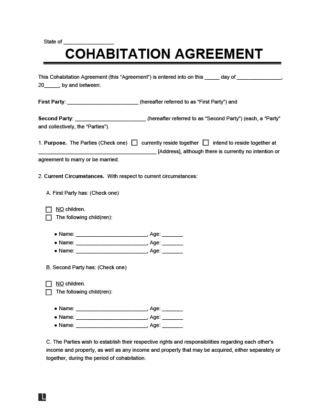
Use our cohabitation agreement to detail the responsibilities of an unmarried couple who lives together.

Updated August 15, 2024
Written by Yassin Qanbar | Reviewed by Brooke Davis
A cohabitation agreement or a “common law partner agreement” is a written contract between unmarried couples who live together but choose not to be married. The agreement describes their property rights and financial obligations during and after the time they reside at the same premises.
A cohabitation agreement or a living-together agreement is a legal document that describes the property rights and financial obligations of an unmarried couple who lives in the same residence. This contract dictates their arrangement while together and explains what happens if the relationship ends.
A couple begins creating this agreement by meeting to discuss their desired terms and conditions. Once they concur on the terms, they can draft and sign the agreement.
A cohabitation agreement can be legally binding under certain conditions. Both parties must sign it voluntarily without force and clearly understand its terms. The agreement must also adhere to the regulations of the jurisdiction where the parties reside.
If the parties are unsure about abiding by legal requirements, they should seek independent legal counsel to ensure compliance. Furthermore, they can seek the signatures of witnesses or a notary public to improve its validity.
If a relationship ends and the parties have a dispute, a court can enforce the document. A court will typically enforce a cohabitation agreement if it complies with public policy and doesn’t document illegal terms.
Here are some cases when parties would use a cohabitation agreement and examples:
A simple cohabitation agreement should generally have at least the following elements:
Refer to the table below to see how cohabitation differs from marriage, as you may discover the need for a cohabitation agreement if you live with a partner and you aren’t married:
| Cohabitation Agreement | Marriage | |
|---|---|---|
| Who Can Enter | No requirements. Anyone can create a cohabitation agreement | Numerous requirements which can vary depending on your state, e.g. marriage license, age minimums, a ceremony, officiator, witnesses, etc, |
| Termination | Can be terminated informally but can have the same emotional cost as the end of a marriage. | Requires the involvement of the court, e.g. legal separation, divorce and can be of great financial and emotional cost. |
| Property Division | Can divide property if outlined in the agreement but requires legal workarounds to have the same property protections as a marriage | Has stronger legal protections in place for the division of property |
| Right to Alimony | Partners can only get financial support if outlined in the agreement | Spouses may have a legal right to alimony |
| Decision-Making | Without legal workarounds, only the relative of an ill or incompetent partner has the authority to make financial or health decisions on their behalf | Spouses have the authority to make legal decisions for each other if one falls ill or incompetent |
| Inheritance Rights | Partners have no inheritance rights unless specified in the deceased's partner's will | Spouses have a legal right to inherit a deceased spouse's property |
| Paternity Rights | The father in a cohabiting relationship may have to prove their paternity through blood tests and legal methods | A father in a marriage has paternity rights by default |
| Child Support | There is no legal obligation for the father in a relationship to support children during cohabitation, but it becomes a requirement when paternity has been proven | The father is legally obligated to support children during the marriage |
A common-law marriage is when a couple doesn’t have a marriage license but is still legally married. A common-law marriage meets the following requirements [1] :
Depending on where they live, couples in a common-law marriage may have benefits similar to those in traditional marriages. However, some states limit the benefits of common-law marriages. You can use a cohabitation agreement to clarify property and financial rights in the relationship.
Explore the states that allow common-law marriages to some extent:
| State | Conditions Under Which Common-Law Marriage Is Allowed | Laws |
|---|---|---|
| Alabama | Recognizes common-law marriages if they began before January 1, 2017. | Ala. Code § 30-1-20 |
| Colorado | Recognizes common-law marriages if they began before January 1, 2006. May recognize later common-law marriages if both parties are at least 18 and the marriage doesn't violate other laws. | Colo. Rev. Code § 14-2-109.5 |
| Georgia | Only recognizes common-law marriages if they began before January 1, 1997. | Ga. Code § 19-3-1.1 |
| Idaho | Only recognizes common-law marriages if they began before January 1, 1996. | Idaho Stat. § 32-201 |
| Iowa | Intends for common-law marriages to be for dependent support, but it's not prohibited in other cases. | Iowa Admin. Code r. § 701-73.25 |
| Kansas | Recognizes common-law marriages as long as both parties are at least 18. | Kan. Stat. § 23-2502 |
| Montana | Doesn't invalidate or prohibit common-law marriages. | Mont. Code § 40-1-403 |
| New Hampshire | Recognizes common-law marriages when the couple acknowledges each other as husband and wife and lives together for at least three years. | NH Stat. § 457:39 |
| Ohio | Only recognizes common-law marriages if they began before October 10, 1991. | Ohio Rev. Code § 3105.12 |
| Oklahoma | Recognizes common-law marriages if both parties are at least 18, not related by blood, live together, and are financially interdependent. | 1981 OK CIV APP 21, 629 P.2d 808 |
| Pennsylvania | Only recognizes common-law marriages if they began before January 1, 2005. | Pa Stat. § 23.1103 |
| Rhode Island | Recognizes common-law marriages if the two partners live together and present themselves as married to the public. | RI Gen. Stat. § 15-1-7 |
| South Carolina | Recognizes common-law marriages with no specific limitations. | SC Code § 20-1-10 |
| Texas | Recognizes common-law marriages if both parties consent to the marriage, tell others they're married, and live together. | Tex. Fam. Code § 2.401 and Tex. Fam. Code § 1.101 |
| Utah | Recognizes common-law marriages if the parties live together and present themselves as married to others. | Utah Code § 30-1-4.5 |
The first step in writing a cohabitation agreement is filling in the parties’ information, including your names and current or intended addresses. You can also record the date you wrote the agreement and the governing state.
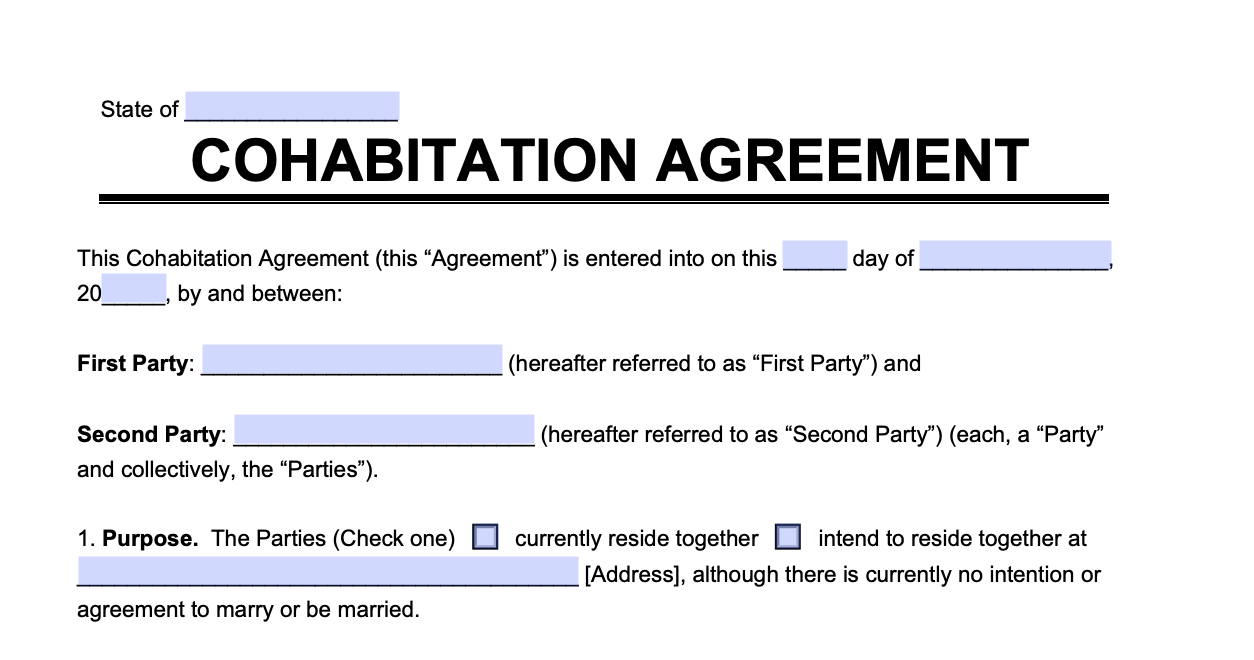
This section typically refers to whether either party has any children from previous relationships. You should specify if there aren’t any kids. If there are, you need to write down their names and ages.
You should also clearly outline the obligations of each parent to their children. Unless one partner obtains a court order of adoption, the agreement assumes each person is responsible only for their children.
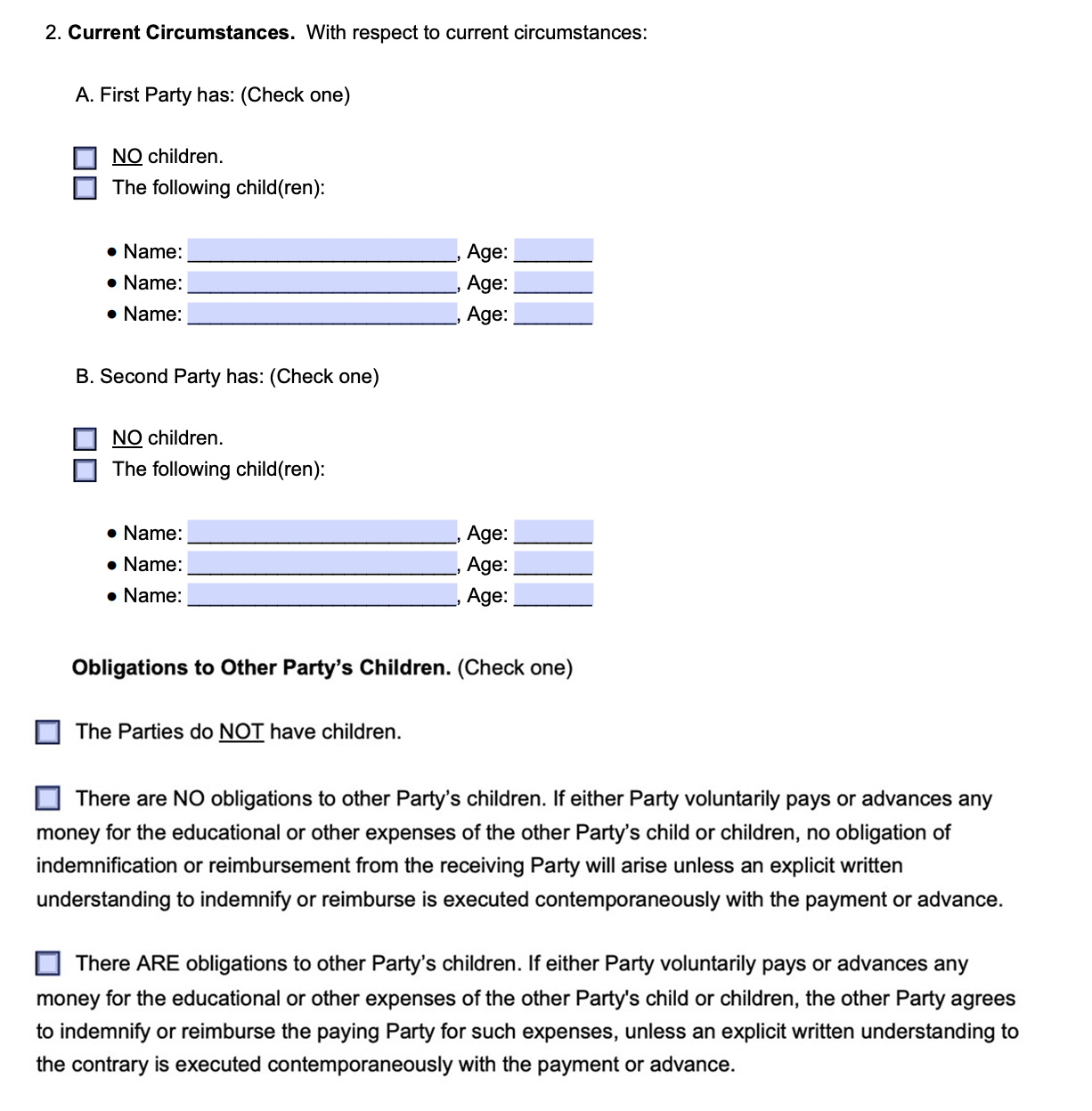
Discuss with a partner and decide when the cohabitation agreement will come into effect.
Remember that both of you need to have begun cohabiting by this date. Otherwise, the contract will become null and void.

You can list the property you acquired before becoming a couple you want to treat as separate property, including financial assets, household goods, vehicles, and other items.
Any property listed as “separate” in the cohabitation agreement will not be divided with the other person if death or separation occurs.
Your shared property, or joint property, is a property that both parties jointly own. These will be divided between both parties upon death or separation. Both parties can agree upon how to divide this property before signing the agreement.
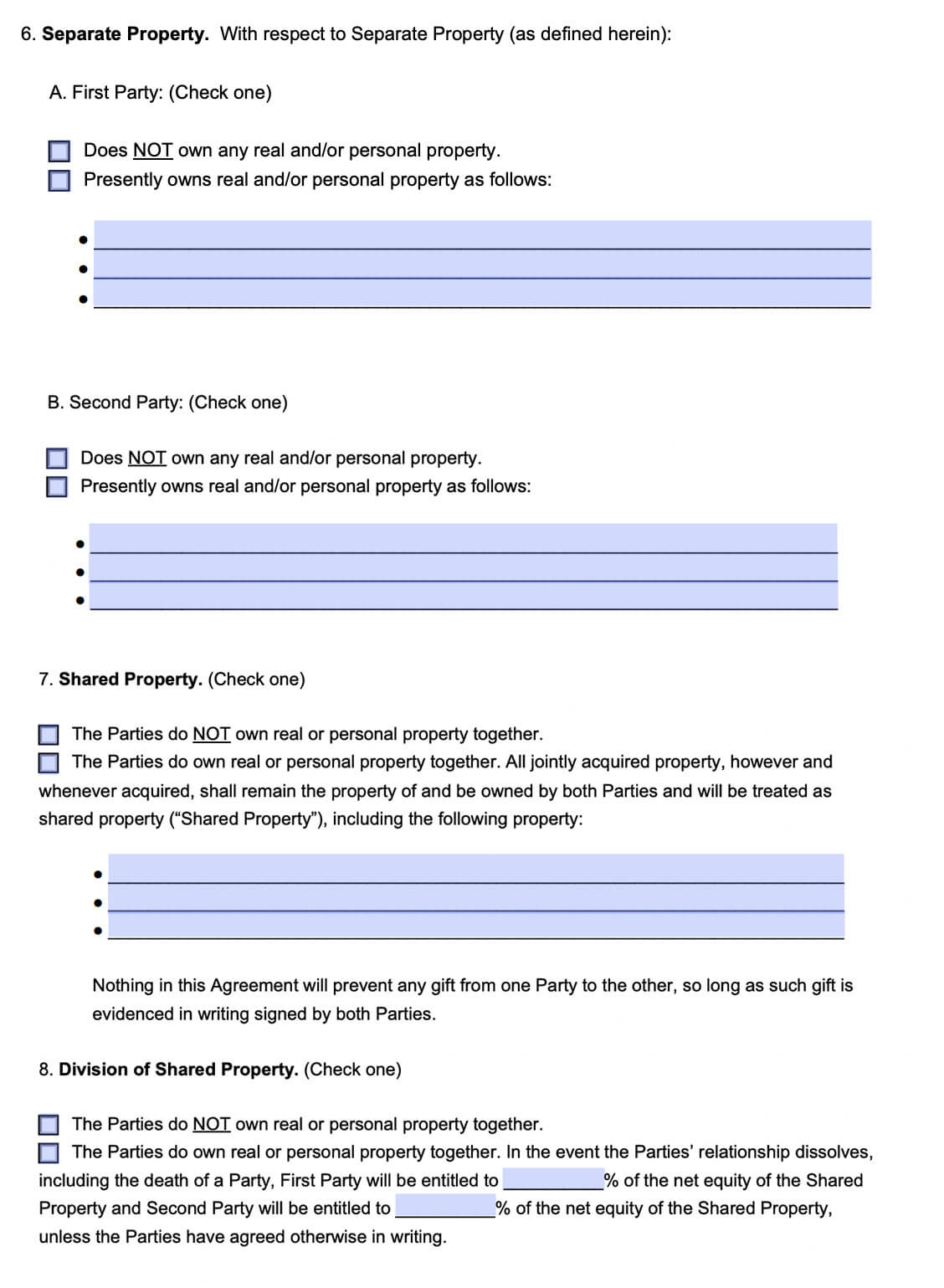
Although not necessary, listing your debts lets you clearly detail who is responsible for which debts.
Without a cohabitation agreement, you may have to assume your partner’s debts if you split up.
You should also specify any shared debts you and your partner have. Typically, shared debt occurs due to a joint purchase secured by a joint loan for items like a vehicle or home.
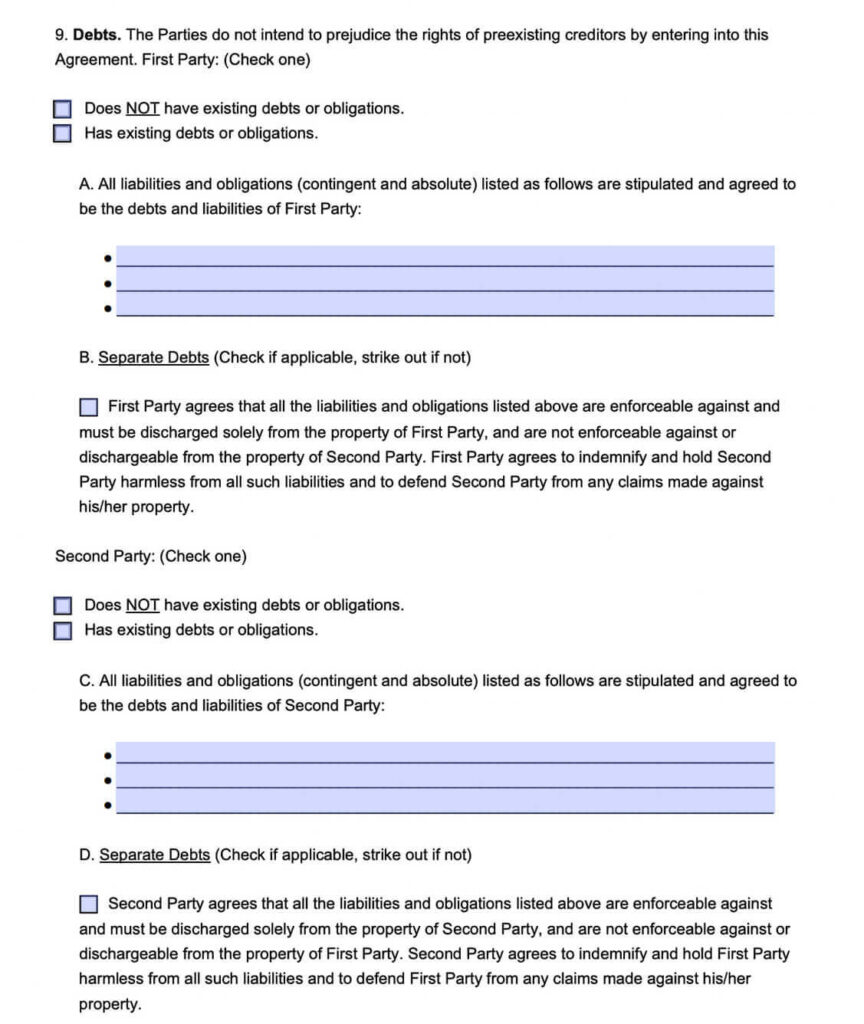
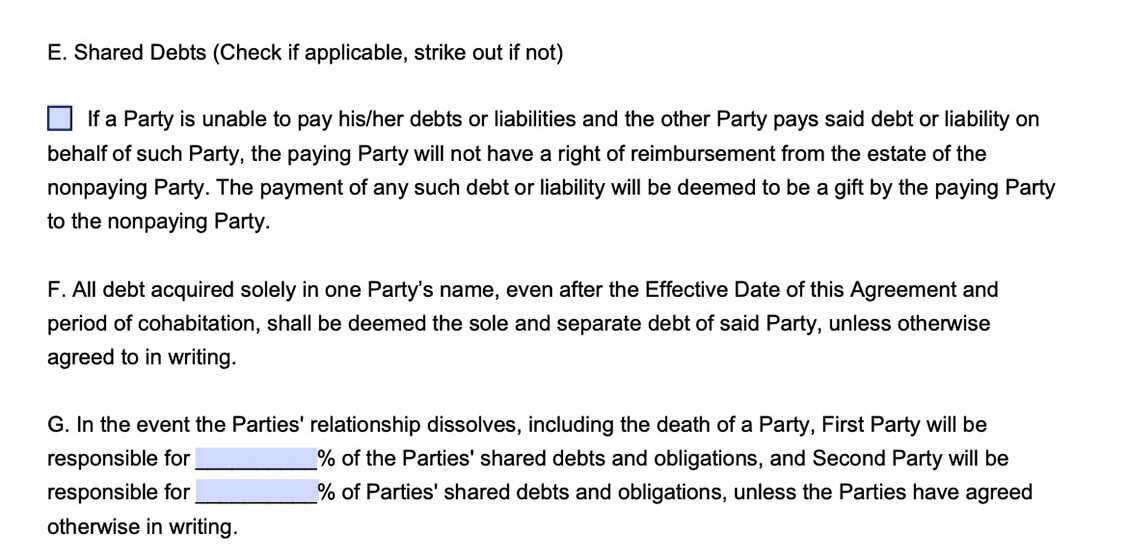
Shared living expenses can be divided, with each party paying different percentages or dollar amounts depending on the situation. You can also include information about whether joint accounts will be used and the ownership interests of purchases made through that joint account.
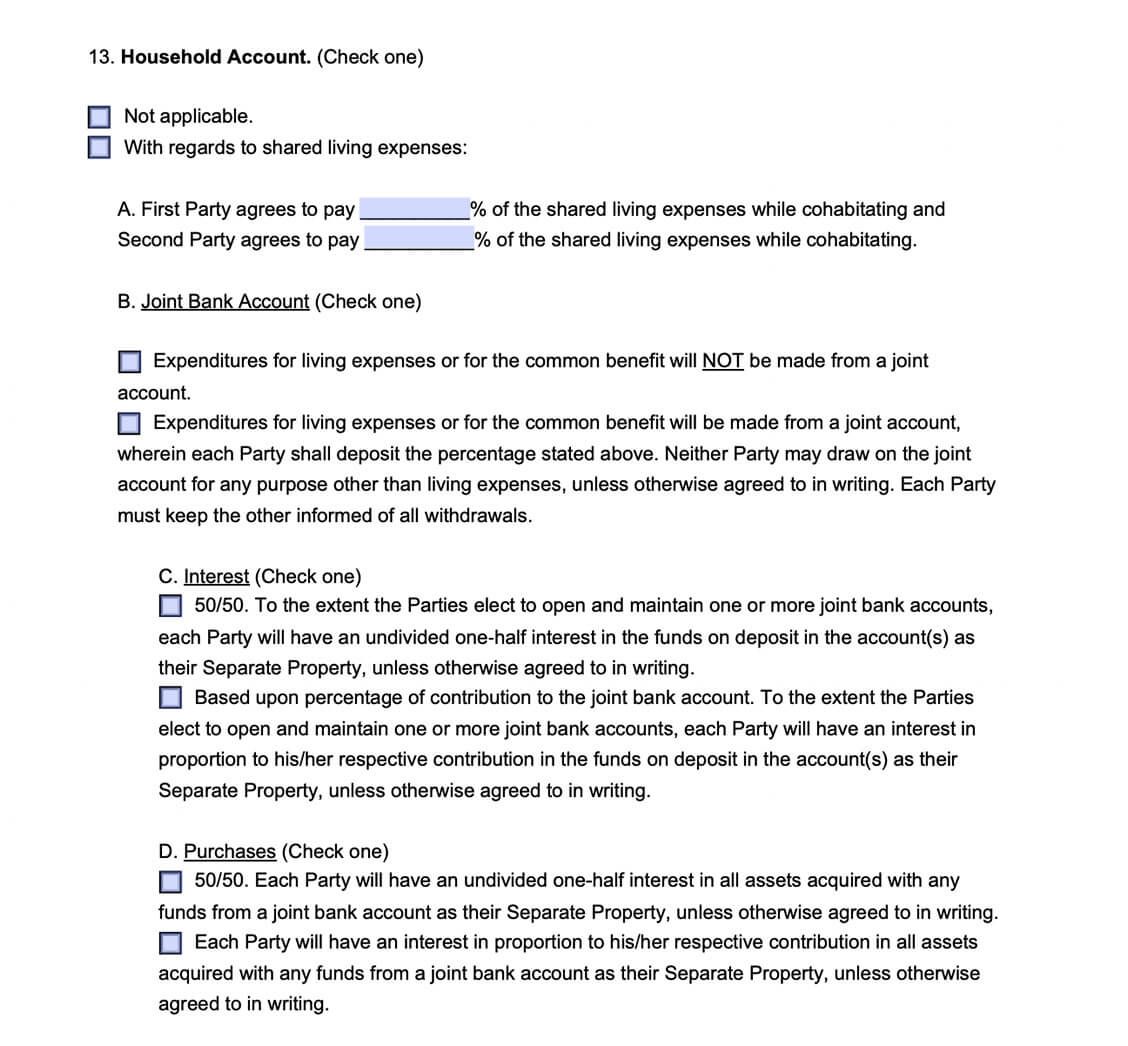
You should provide the terms and protocols for the agreement’s termination.
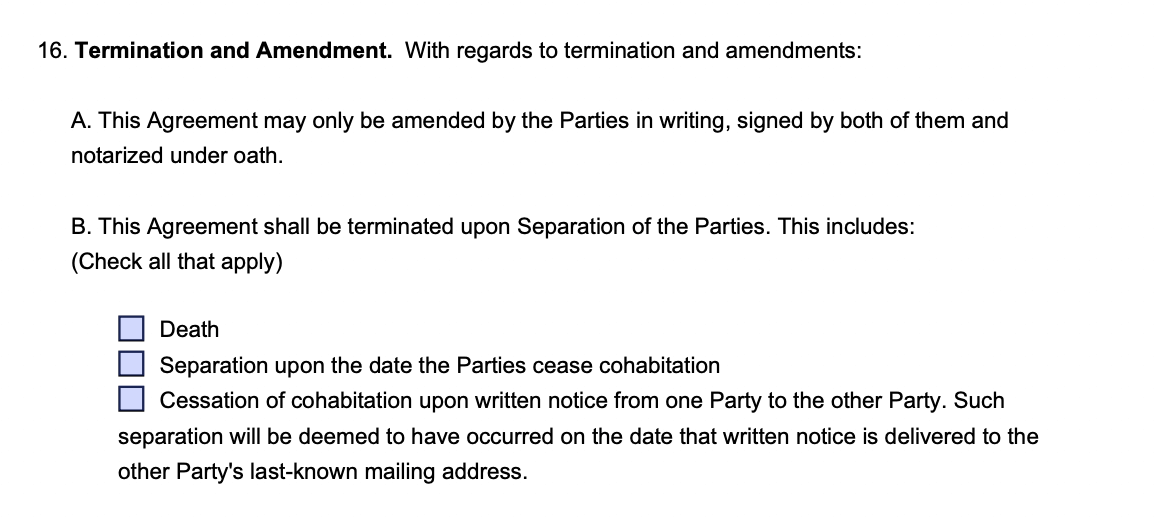
Once you have filled in the other sections, both parties should sign the agreement so it becomes a legally binding contract.
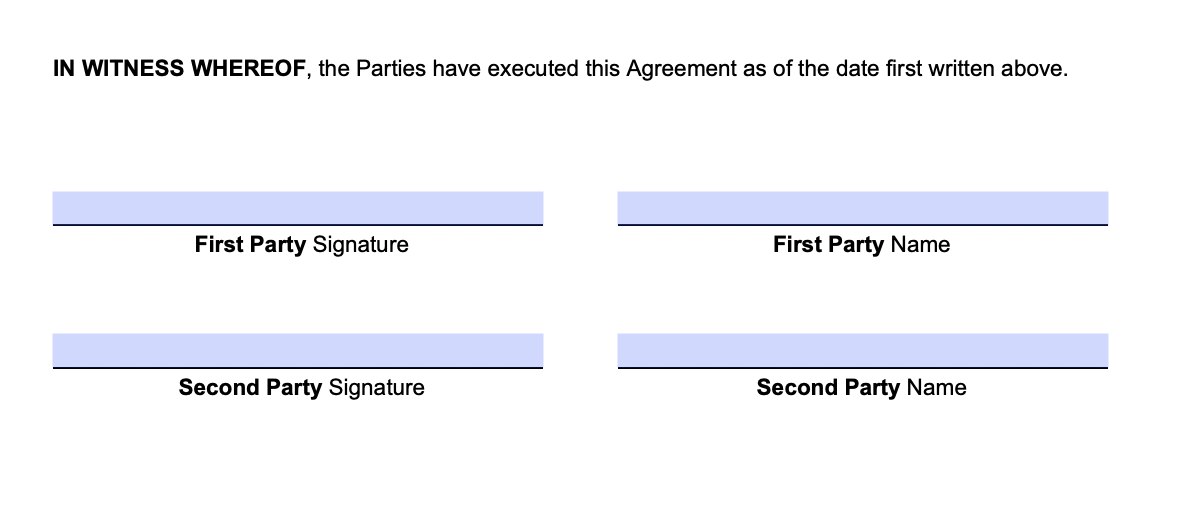
Download a free cohabitation agreement template as a PDF or Word file below: